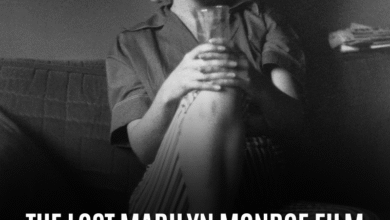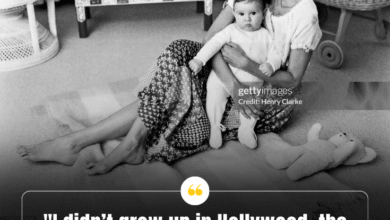The Hidden Influences Behind Anna Kendrick’s Directorial Style – You Won’t Believe Who Shaped Her Vision!
OPINION: This article may contain commentary which reflects the author's opinion.
Anna Kendrick’s evolution from acclaimed actress to promising director is one of the most exciting transitions in Hollywood. Known for her breakout role in Up in the Air (2009) and her comedic performances in the Pitch Perfect series (2012–2017), Kendrick made her directorial debut with the 2023 Netflix thriller Woman of the Hour. Based on the chilling true story of serial killer Rodney Alcala’s appearance on The Dating Game, the film has garnered critical attention for its dark humor, tense atmosphere, and Kendrick’s confident direction. To understand the roots of her directorial style, we analyzed the filmmakers who have most influenced her creative approach, as shared by Kendrick in various interviews.
Career Context and Directorial Debut
Born in Portland, Maine, Kendrick began her career in showbiz at a young age, earning a Tony nomination for her role in High Society when she was just 12 years old. Her acting career flourished with standout roles in Up in the Air, for which she received an Oscar nomination, and Pitch Perfect, where she became a beloved figure in the musical comedy genre. However, Kendrick’s journey took a pivotal turn when she decided to direct Woman of the Hour, a project she initially joined as an actor and producer. After becoming deeply attached to the script and realizing that no director was a perfect fit, Kendrick pitched herself as the director.
The film premiered at the Toronto International Film Festival (TIFF) in 2023 and was lauded for its compelling mixture of dark humor and suspense. Critics praised Kendrick’s handling of the film’s intense subject matter and the unique tone she established, marking Woman of the Hour as a promising start to her directing career. This debut film reflects Kendrick’s diverse influences, which span a range of genres and filmmaking traditions.
Identifying Directing Influences
To uncover the filmmakers who shaped Kendrick’s style, we examined interviews in which she discussed her approach to directing Woman of the Hour. In a revealing interview with Letterboxd Magazine, Kendrick identified four filmmakers whose work had a direct impact on her vision for the film. These directors are Joel and Ethan Coen, Agnès Varda, Alan J. Pakula, and Jean-Pierre Melville, each of whom contributed distinct elements to her filmmaking style:
-
Joel and Ethan Coen – No Country for Old Men (2007) The Coen brothers’ No Country for Old Men is a pivotal influence on Kendrick’s style, particularly in terms of pacing and atmosphere. Kendrick cited the Coens’ use of swift, brutal violence in the opening sequence as something that influenced her approach to the film’s tension-building moments. She also noted how the Coens’ evocative desert landscapes and their ability to create a chilling atmosphere without overt exposition played a crucial role in shaping Woman of the Hour‘s tone.
-
Agnès Varda – Le Bonheur (1965) Agnès Varda, a luminary of the French New Wave, influenced Kendrick’s approach to creating a sense of unsettling intimacy. Le Bonheur, with its exploration of human relationships and its disturbing, almost perversely intimate visual style, was a touchstone for scenes in Woman of the Hour that explore gender dynamics and the discomfort of personal connections. Kendrick reflected on how Varda’s ability to evoke a “skin-crawling” feeling through her cinematography helped her design similarly tense and uneasy moments in her own film.
-
Alan J. Pakula – Klute (1971) Alan J. Pakula’s Klute is another significant influence, particularly in how Kendrick approached period detail and social commentary. Klute, a tense thriller that addresses misogyny and sexual politics, provided Kendrick with a template for creating a disorienting atmosphere in her film. The 1971 New York sequence in Klute inspired Kendrick’s use of setting to enhance the mood and reflect the unsettling dynamics at play in Woman of the Hour, particularly in the film’s disorienting casting call scene.
-
Jean-Pierre Melville – Army of Shadows (1969) Jean-Pierre Melville’s Army of Shadows provided insight into how to handle a film’s bleak, honest reality. Kendrick credited Melville’s ability to deal with grim subject matter with authenticity, especially in how Army of Shadows navigates the complexities of survival in a harsh, morally ambiguous world. This influence is particularly apparent in the unsettling epilogue of Woman of the Hour, where Kendrick confronts the darker implications of the story with raw honesty.
Additional Context and Potential Influences
While Kendrick has explicitly credited these four filmmakers for shaping her directing style, it’s also worth noting that her acting career has involved collaborations with prominent directors who likely influenced her own approach to filmmaking. Kendrick worked with Jason Reitman on Up in the Air, Edgar Wright on Scott Pilgrim vs. the World, and Paul Feig on A Simple Favor. In a 2021 interview with Variety, Kendrick mentioned calling Feig for advice before embarking on her directorial journey, suggesting that his mentorship may have had an impact on her decision to step behind the camera. However, specific advice from Feig or other mentors has not been detailed in interviews, and the influence of her acting career seems to manifest more through her understanding of storytelling than through directorial advice.
Synthesis and Interpretation
From the four filmmakers Kendrick highlighted, it’s clear that her directing style is a blend of tension-building techniques, evocative visual storytelling, and social commentary. The influence of the Coen brothers is evident in the pacing and atmosphere of the film, while Varda’s impact can be seen in the unsettling intimacy of certain scenes. Pakula’s focus on period details and social critique, combined with Melville’s honest, bleak endings, form a unique combination that helps define Kendrick’s signature approach to storytelling. This eclectic mix of influences results in a thriller that is both emotionally complex and visually striking, reflecting Kendrick’s personal vision as a director.
While Kendrick’s career is still in its early stages as a filmmaker, her debut with Woman of the Hour suggests that her style will continue to evolve, informed by the diverse and influential voices that have shaped her work. With her acting background and strong directorial influences, Anna Kendrick is carving out a distinctive space in the world of filmmaking, and audiences can expect more innovative work from her in the future.


